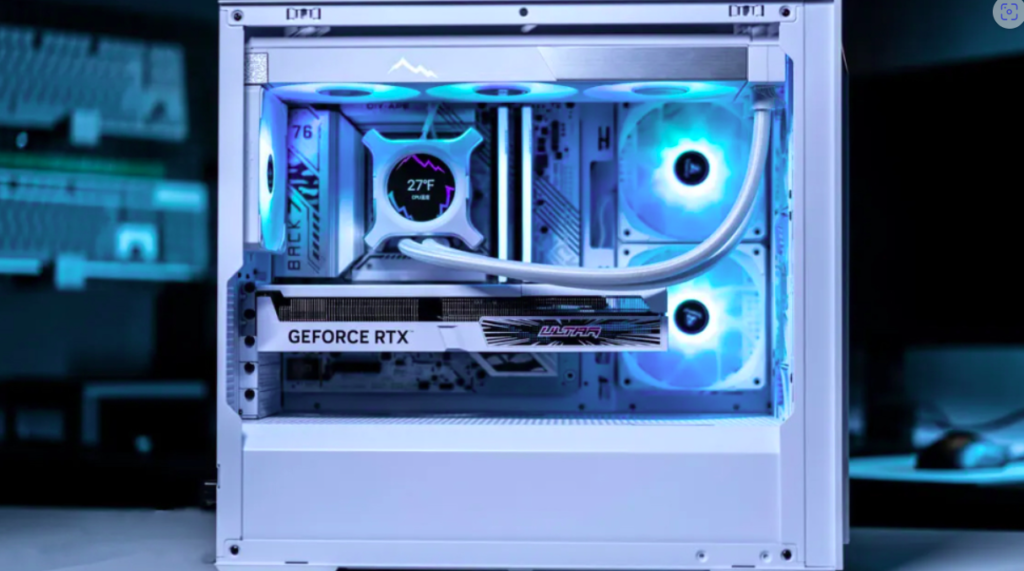
These days, more people are joining the “no cables” PC trend. Numerous new pieces of hardware enable PC builders to conceal ugly connections for a more elegant build. Now, Colorful is entering the market with GPUs that fully conceal the power lines. The company’s novel approach involves hiding the connection beneath a detachable section of the GPU’s backplate.
The business has now expanded its product line to include the RTX 4060 and 4060 Ti cards in addition to the RTX 4070 GPUs that were originally revealed with this hidden cable architecture. This design is made possible by the RTX 40-series cards’ unusually short printed circuit board (PCB), which measures about 6 inches. On GPUs with three fans, this enables the heatsink to protrude far beyond the PCB, creating a hidden space to hide the power connections. In order to connect the power cord, the user can pry off the section of the backplate that is not magnetically attached to the PCB. The cable exits the assembly facing the back through a passage that is integrated right into the design. As it passes through the power supply and underneath the motherboard, it vanishes.
The design is strikingly similar to Gigabyte’s second-generation RTX 4090, which had a large opening in the heatsink and backplate to house the power wire. To be fair to Colorful, Gigabyte’s design is far less attractive than Colorful’s because Colorful’s GPU appears to be missing pieces whereas Gigabyte’s looks completely normal. The RTX 4090 utilizes a bigger 12VHPWR cable and connector, whereas the Colorful cards use an older 8-pin power socket, thus this comparison is not exactly apples to apples.
In addition, Colorful’s approach to solving this problem is undoubtedly less costly than Asus’s, which involves shifting the power cable from the GPU to the motherboard. The only cable-free design that does away with the power cable is this one, which facilitates an easier installation and a cleaner appearance. It’s far more limited, though, as gamers must purchase an Asus motherboard and GPU that work with it in addition to a case that fits the motherboard’s backside ports. Asus has declared a hardware “alliance” to produce all of these components, although it probably won’t start up properly until at least the following year.